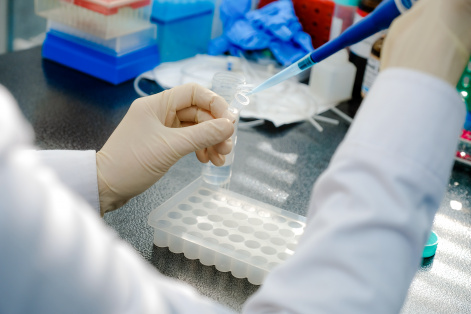New "package" for enzymes will make it easier to find poisonous substances in food
19 May 2021 г.

Enzymes are proteins playing the role of catalysts in all living organisms. Even a small amount of any toxins will drastically reduce the enzyme activity. Due to this property, enzymes are widely used as indicators for monitoring the quality of food, water, soil and air.
The scientists explained that by observing the reaction, for example, of the enzyme butyrylcholinesterase with apple juice, one can reliably find out how much poisonous pesticides there are in a food sample.
Enzymes are sensitive to storage conditions: they are easily destroyed by temperature changes or changes in humidity. Due to this, high-quality laboratory analysis can be very expensive. Specialists of the Institute of Biophysics and SibFU were able to solve this problem by placing the enzyme in a shell of starch or gelatin gel.
"A solution of natural polymers protects the enzyme from losing the desired properties. In such a "package" one can store the enzyme for at least one and a half years without worrying about the conditions. Now laboratory enzymes "live" on average from several days to several months. Our method has no analogues in terms of simplicity and efficiency ", - says Elena Esimbekova, a researcher at the laboratory of bioluminescent biotechnologies of the Siberian Federal University, senior researcher at the Institute of Biophysics SB RAS.
According to the scientists, the final product is dried "droplets" of gel with a dose of enzyme, similar to tiny circles made of rice paper. An analysis on laboratory equipment with this drug will cost no more than 100 roubles.
"If the reaction product of the enzyme and analyte becomes bright yellow in the spectrophotometer, then the proportion of organophosphate pesticides in the sample is at an acceptable level. If we do not see the yellow color, the sample is seriously contaminated. Similarly, by varying enzymes, almost any hazardous impurity can be detected", - explains Elena Yesimbekova.
The work was carried out within the framework of a joint project of the Russian Foundation for Basic Research, Government of the Krasnoyarsk Region and Krasnoyarsk Regional Science Foundation.
Source: RIA Novosti
Share:
